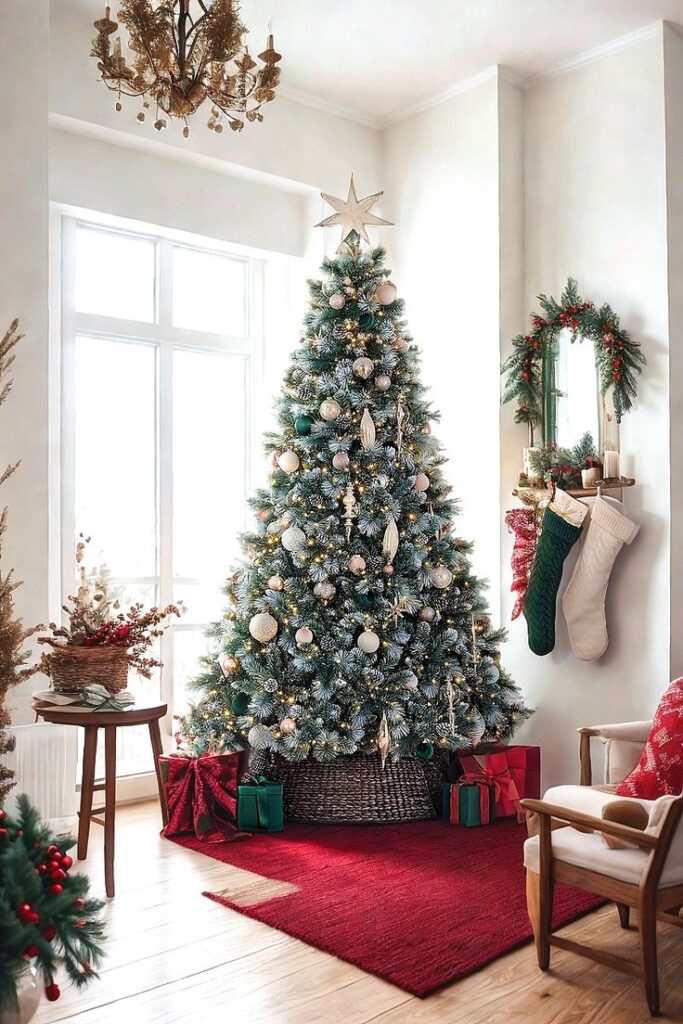

A Christmas tree is a decorated tree, usually evergreen, that many people put up during the holiday season. It is a symbol of celebration and brings a festive feeling to homes and public spaces.
The Christmas tree adds charm and tradition to the holiday, serving as a centerpiece for decorations and family gatherings. People choose from different types of trees, real or artificial, based on their space, style, and care preferences.
How a tree is decorated and cared for can change the whole experience of the holiday. Some follow old customs, while others create their own unique traditions with the tree.
Key Takeaways
- A Christmas tree is a key part of holiday celebrations.
- Different types and decorations can fit anyone’s style.
- Proper care helps keep the tree fresh throughout the season.
What Is a Christmas Tree?
A Christmas tree is a decorated evergreen tree used during the Christmas season. People place lights, ornaments, and sometimes tinsel on it to celebrate the holiday. The use of the tree has roots in history, tradition, and symbolism that shaped modern customs.
History of Christmas Trees
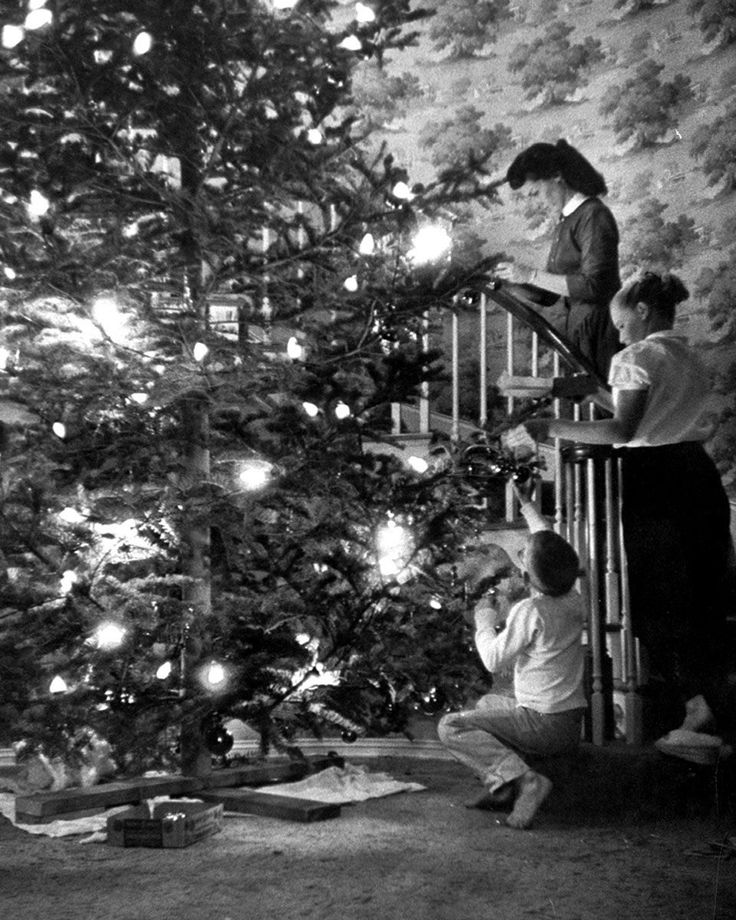
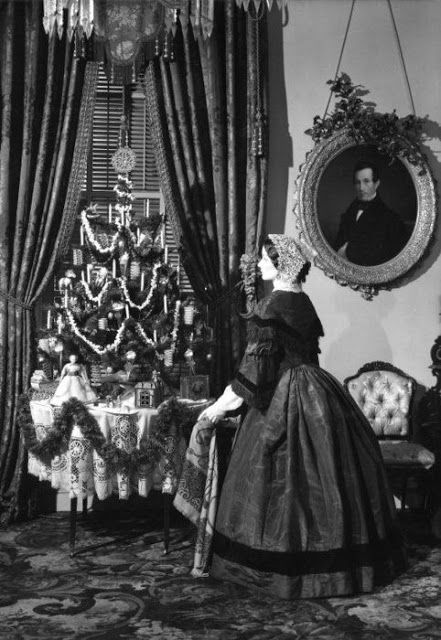
The Christmas tree tradition began in Germany in the 16th century. Early trees were decorated with fruits, nuts, and candles. Martin Luther is often said to have added lights to a tree to mimic stars. German immigrants brought the custom to the United States in the 1800s, where it grew popular.
Early trees were often real fir or pine trees. Over time, artificial trees were created for convenience and safety. The custom slowly spread worldwide, adapting to local cultures and materials.
Symbolism and Cultural Significance


The Christmas tree symbolizes life, hope, and renewal during winter. Evergreen trees stay green all year, making them a natural sign of endurance and strength. The lights often represent stars or the light of Christ in Christian communities.
The tree also plays a social role. Families gather to decorate it, making it a focal point of celebration. Different countries add their own cultural elements to the decorations, showing its wide reach and meaning.
Evolution of Christmas Tree Traditions
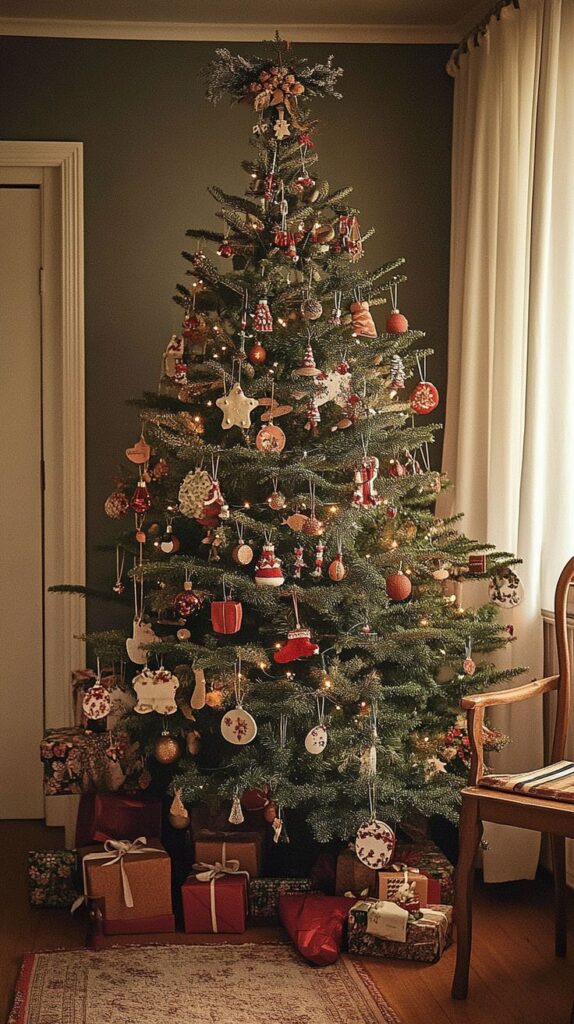
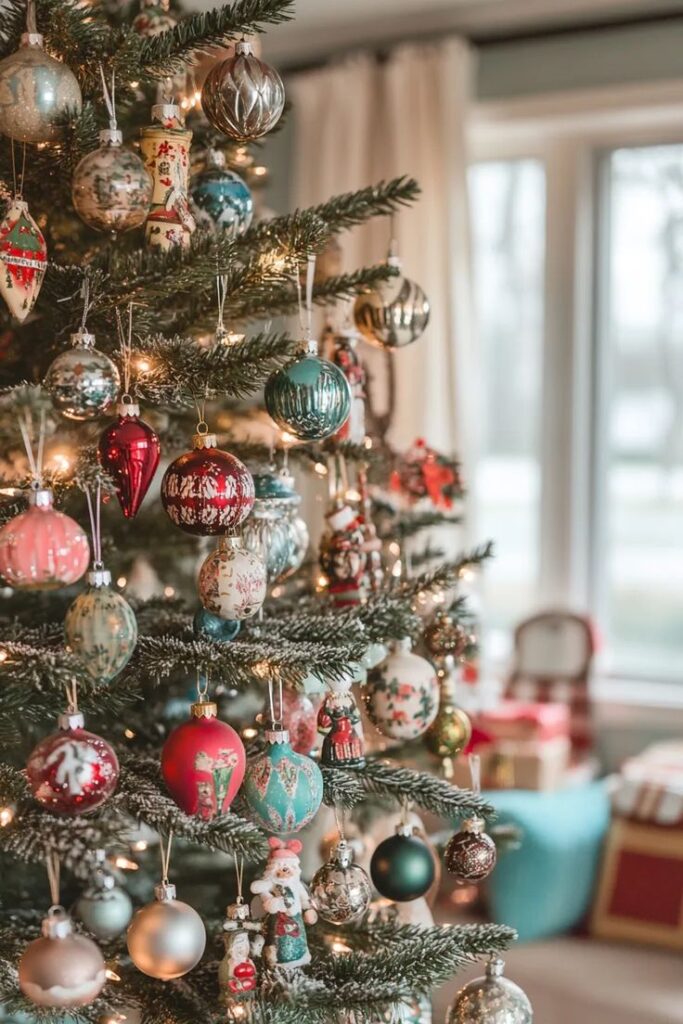
Christmas tree decorations have changed over centuries. Early decorations were natural, like apples and nuts. By the 19th century, glass ornaments and electric lights became standard. Today, decorations range from homemade crafts to themed store-bought items.
Tree types have also changed. Artificial trees use plastic and metal for durability. Some people now use alternative shapes or plant-based trees to reduce environmental impact. The tree remains a symbol, but the ways people celebrate continue to evolve.
Types of Christmas Trees
Christmas trees come in different forms, each with unique features and care needs. Some are natural and require watering, while others are man-made and can be reused for many years. Size and space also influence the choice.
Real Christmas Trees

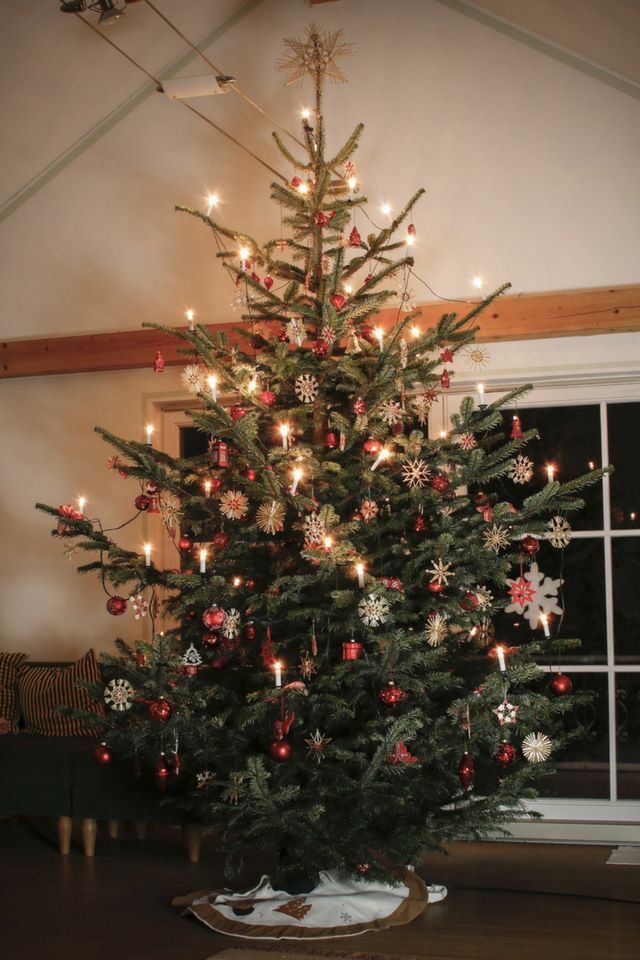
Real Christmas trees are often chosen for their fresh scent and natural look. Common types include fir, pine, and spruce. They need to be watered regularly to stay fresh. Without water, needles can dry out and fall off quickly.
Buying a real tree means selecting one grown on a tree farm or harvested from a forest. After Christmas, many real trees can be recycled into mulch. These trees provide an authentic holiday feel but require clean-up as needles shed.
Artificial Christmas Trees
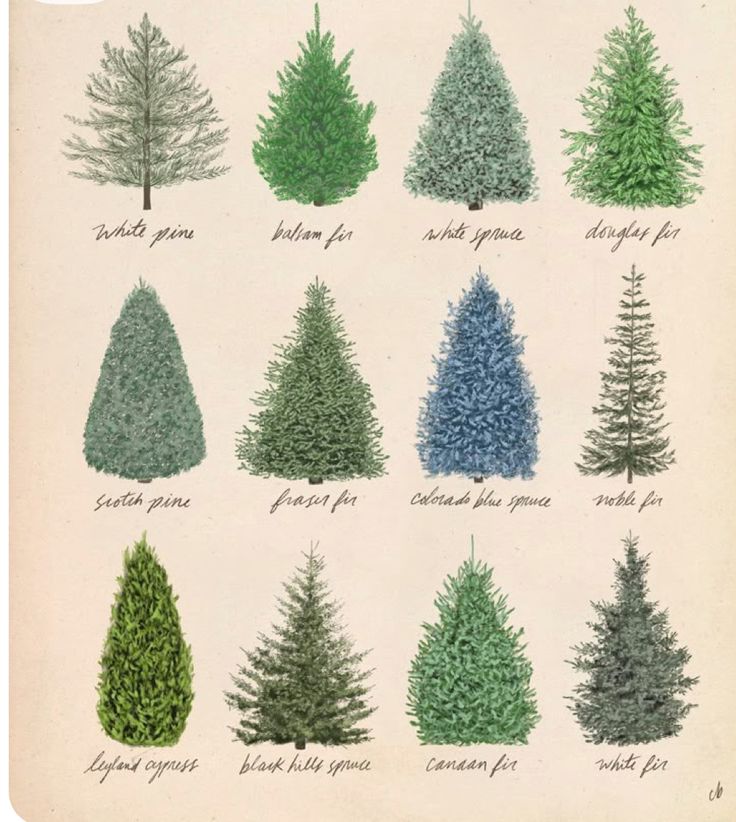
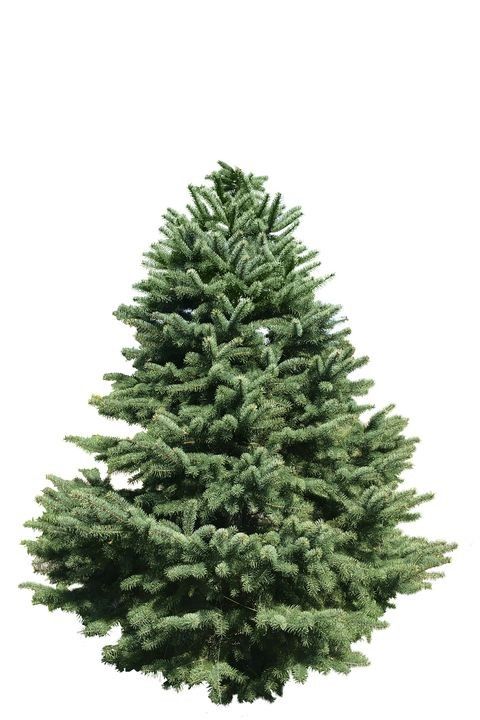
Artificial Christmas trees are made from plastic and metal. They come in many sizes and styles, including pre-lit versions with built-in lights. These trees cost more upfront but can be reused for many years.
Artificial trees do not need watering or special care. They are lighter and easier to set up than real trees. However, they do not have the fresh smell of natural trees. Cleaning them before storage helps keep them looking good season after season.
Tabletop and Miniature Trees
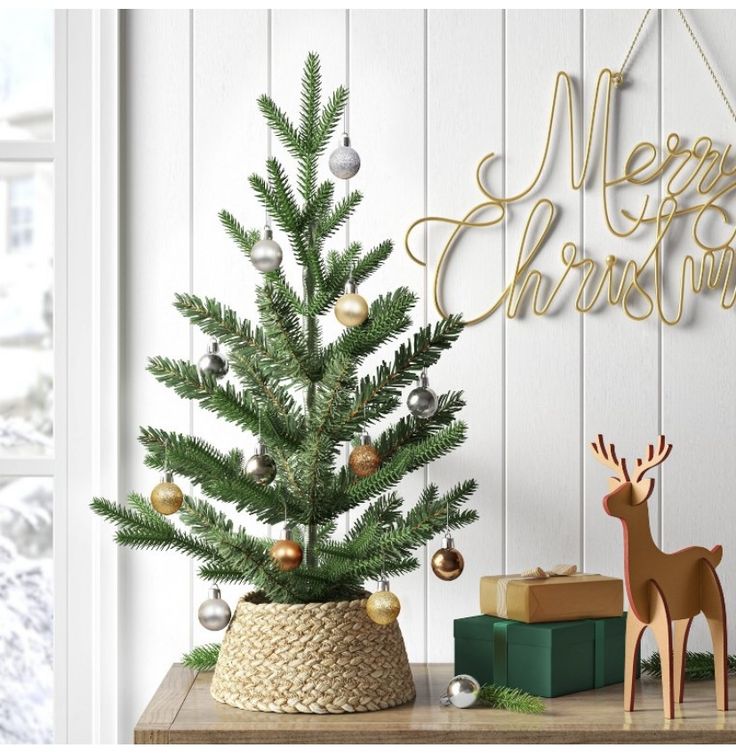

Tabletop and miniature trees are small versions designed for limited space. They are perfect for desks, apartments, or as extra decorations around the house. These trees can be real or artificial.
Mini trees usually stand 1 to 3 feet tall. They are easy to decorate and store. Some come with mini ornaments or lights. These compact trees add holiday spirit without needing much room or effort.
Popular Real Christmas Tree Species
Different types of real Christmas trees have unique features like needle shape, scent, and how long they last. People often choose trees based on these details and how well the tree holds ornaments.
Fir Trees
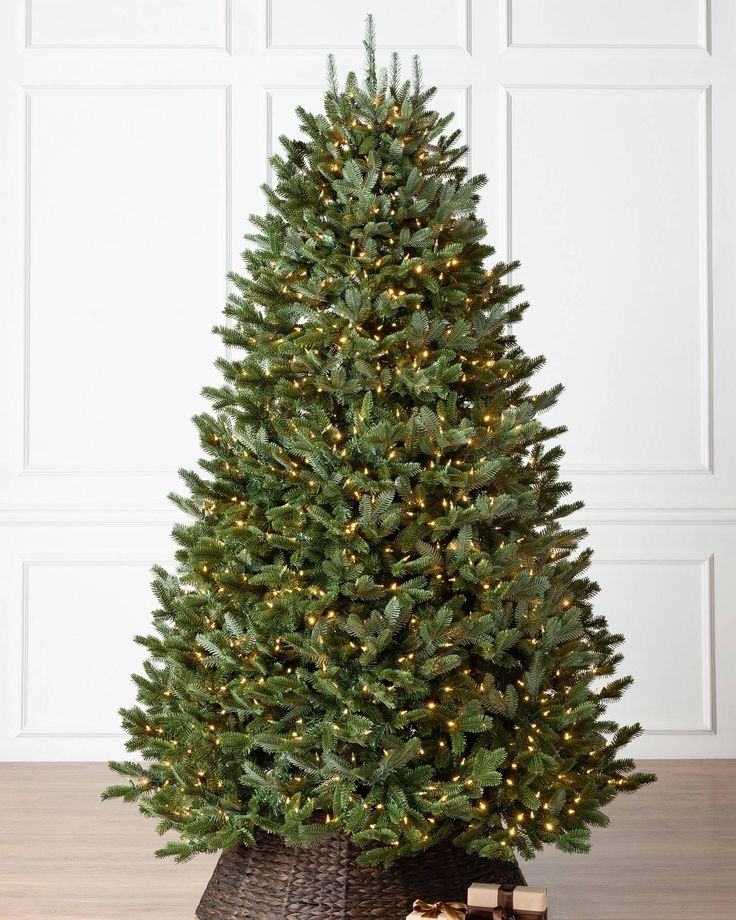

Fir trees are popular because their needles are soft and stay fresh longer. Their branches can hold heavy ornaments well, making them a favorite for many families.
Common types include the Fraser Fir and Balsam Fir. Fraser Firs have strong branches and a sweet smell. Balsam Firs are known for their dark green needles and strong fragrance.
Fir trees also have flat needles with two white lines underneath. They keep their needles longer than many other species, reducing the mess in the house.
Pine Trees
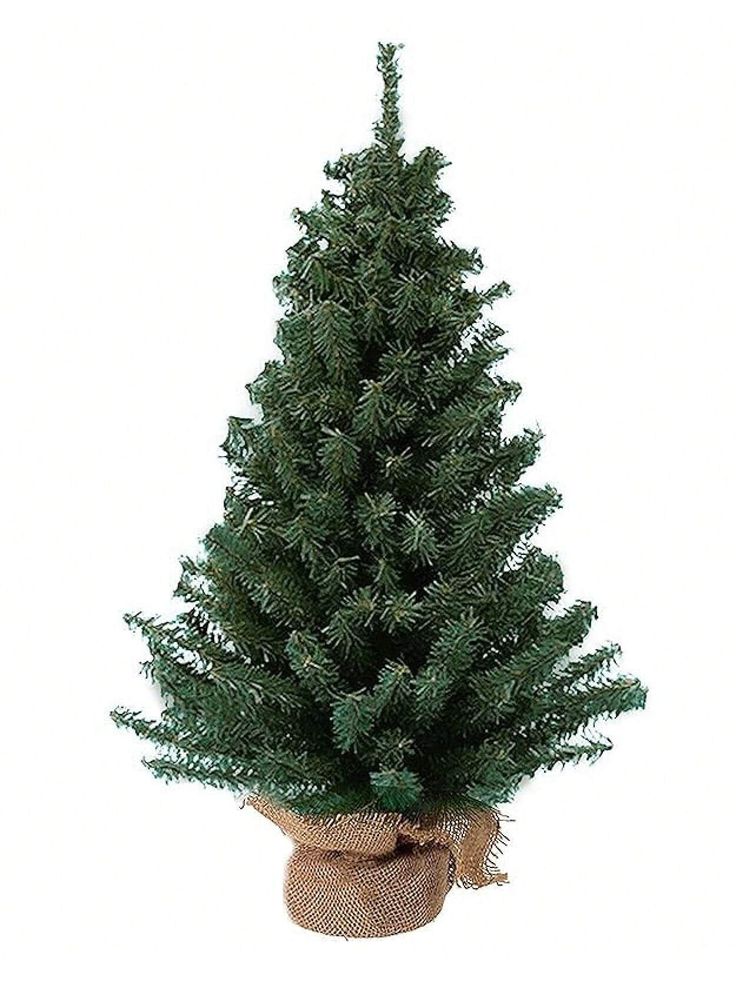

Pine trees have long needles that grow in clusters of two or more. Their branches are sturdy but tend to be more spread out than firs.
One common type is the Eastern White Pine. It has soft, bluish-green needles and a light, fresh smell. Pine trees often keep their needles well but shed more than fir trees.
Pine trees are good for people who want a classic Christmas look. Their needles are softer and hook up to branches in groups, which is different from fir and spruce.
Spruce Trees

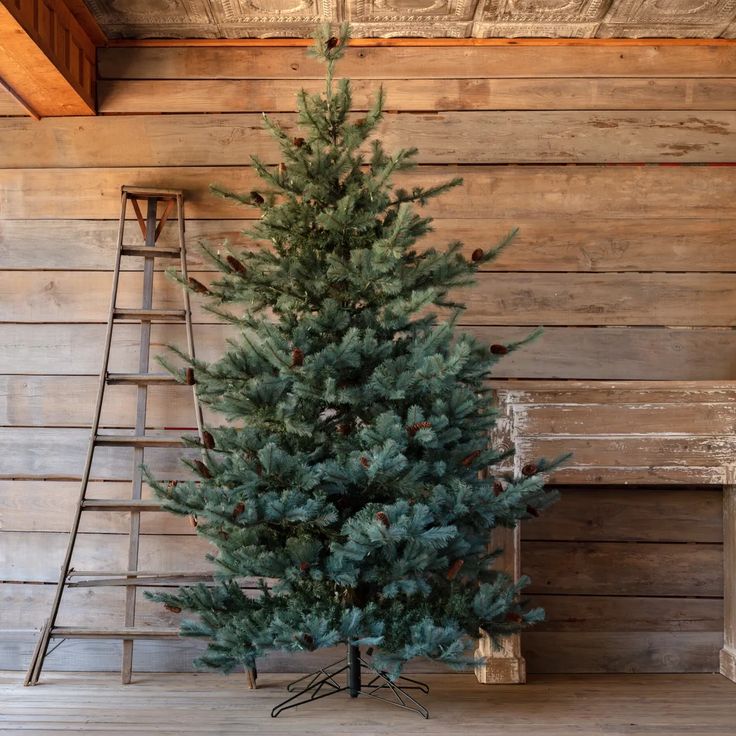
Spruce trees have sharp, stiff needles that grow on four sides of the branch. This gives them a fuller, more bushy appearance.
The Blue Spruce is a popular variety, known for its blue-green needles and strong scent. It has good needle retention but can drop needles faster than firs if it dries out.
Spruce branches are a bit weaker, so they may not hold heavy ornaments as well. However, they are loved for their rich color and classic Christmas tree shape.
| Tree Type | Needle Type | Needle Retention | Ornament Support | Scent Strength |
|---|---|---|---|---|
| Fir | Soft, flat | High | Excellent | Strong, sweet |
| Pine | Long, clustered | Moderate | Good | Light, fresh |
| Spruce | Sharp, stiff | Moderate to low | Fair | Strong |
Decorating a Christmas Tree
Decorating a Christmas tree involves choosing ornaments, lights, and a top piece to create a festive look. Different styles range from classic to modern, with options for colors and themes. Lighting helps set the mood, while toppers give the tree its finishing touch.
Traditional Decorations
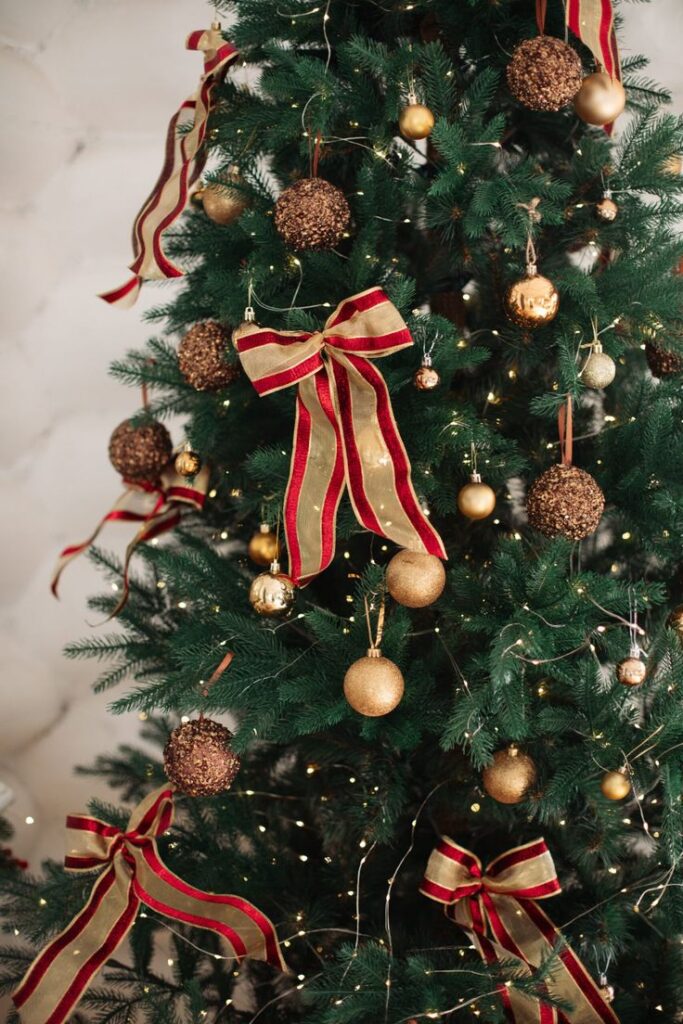
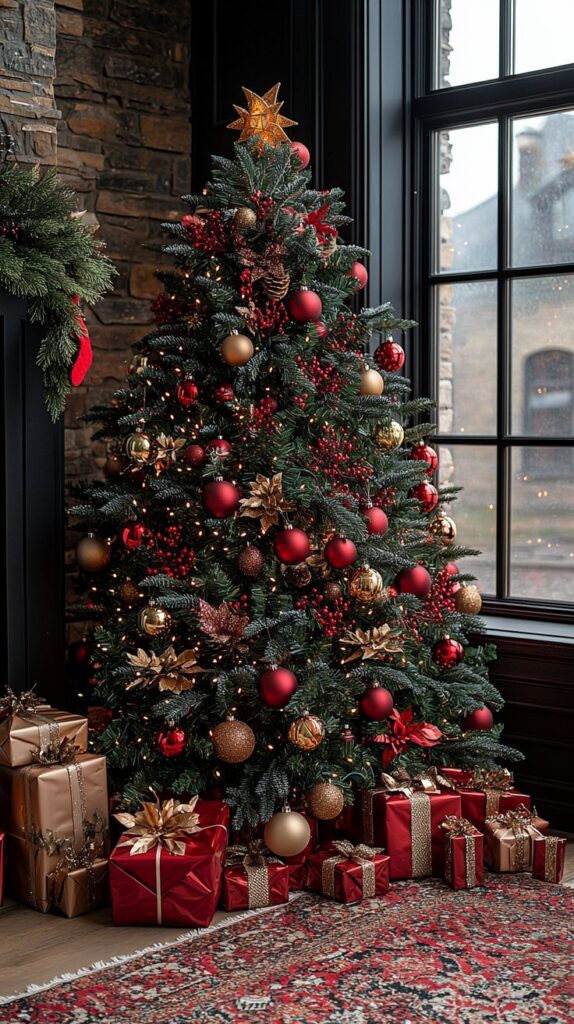
Traditional decorations often include glass baubles, tinsel, and candy canes. Red, green, gold, and silver are the most popular colors. Pinecones, wooden ornaments, and handmade crafts add a natural feel.
People sometimes use popcorn strings or cranberries for a homemade touch. Vintage pieces passed down in families bring a sense of history. These decorations focus on warmth and nostalgia.
Modern Decorating Themes
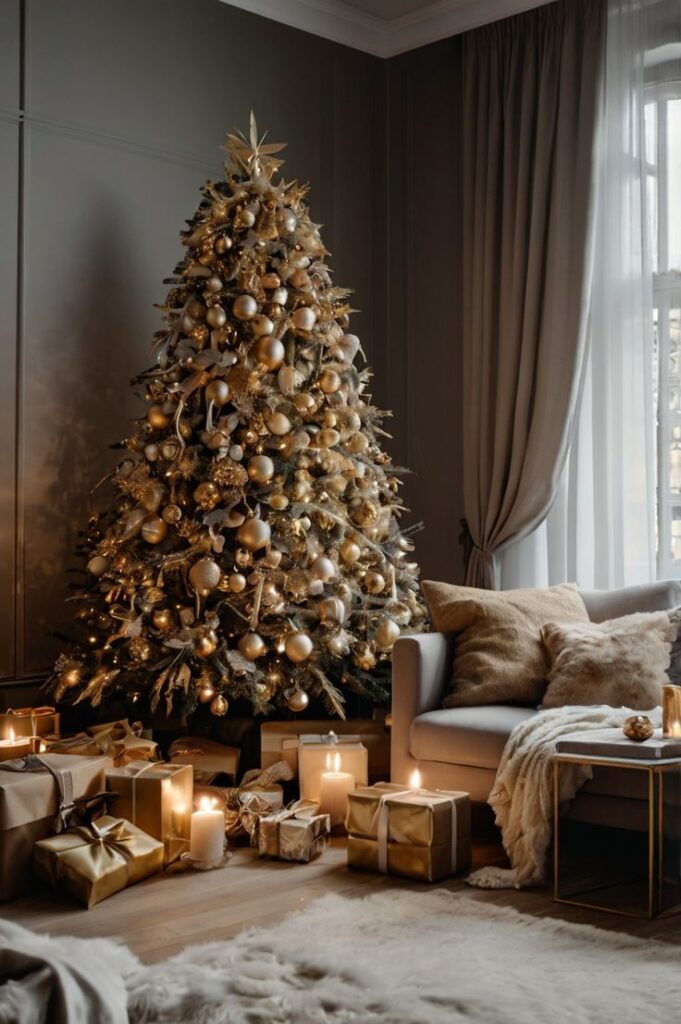
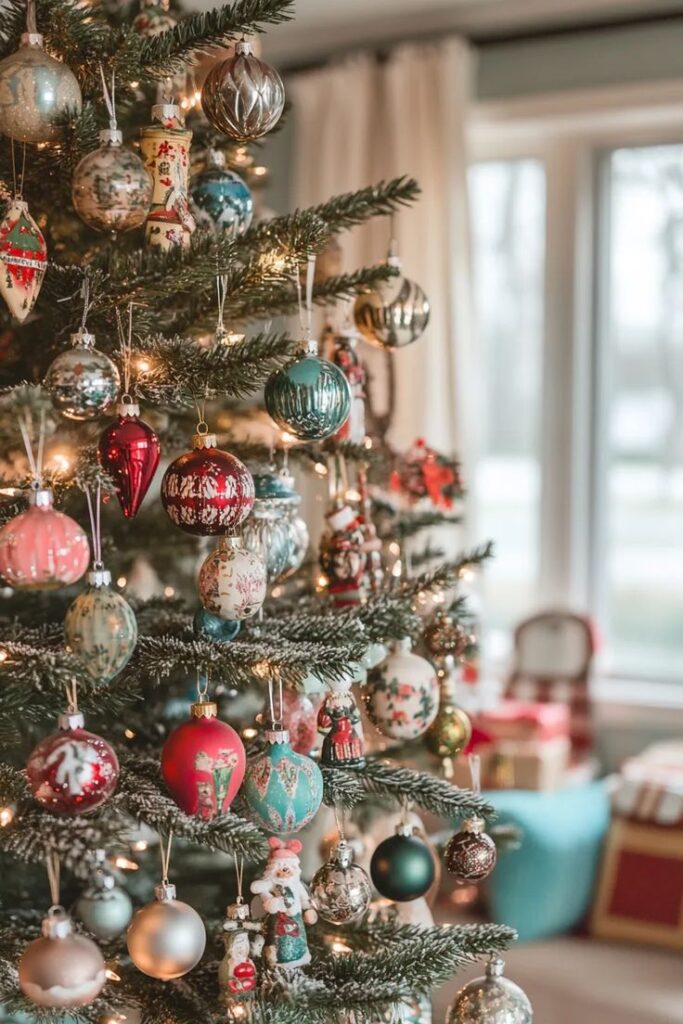
Modern themes use non-traditional colors like blue, pink, or metallics. Some pick minimalist styles with fewer decorations or monochrome schemes. Geometric shapes and unique materials like felt or acrylic are common.
Trendy themes might include eco-friendly or tech-inspired looks. Clear ornaments filled with small lights or fake snow are popular. This style often reflects personal taste or current design trends.
Tree Toppers


Tree toppers are placed at the highest point of the tree. Common toppers include stars and angels. A star usually represents the Star of Bethlehem, while angels symbolize messengers.
Other options are bows, snowflakes, or light-up figures. The choice depends on the tree’s overall look. Some people use family heirlooms or handcrafted pieces for a unique top.
Lighting Choices
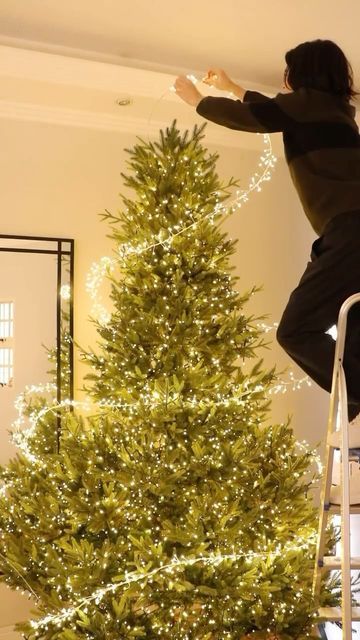
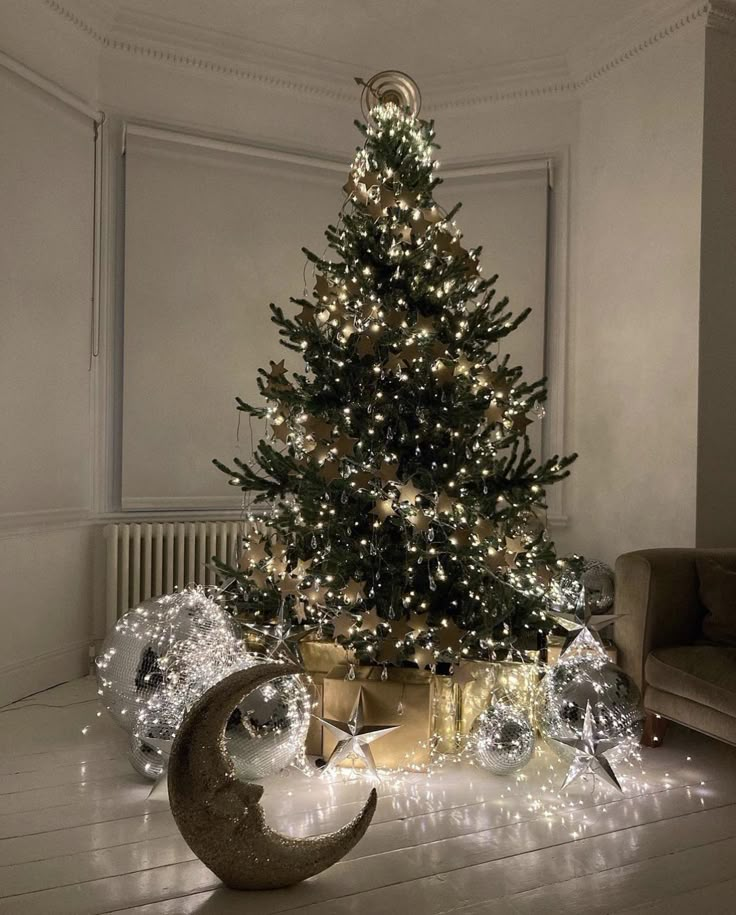
Lights come in many types, like incandescent or LED. LEDs use less power and last longer. White, multicolored, or color-changing lights affect the tree’s mood.
Wrap the lights evenly from top to bottom. Consider features like blinking or steady glow. Battery-operated lights are handy for trees without easy plug access.
Choosing the Right Christmas Tree
Choosing a Christmas tree involves thinking about the tree’s size, where it comes from, and any allergies it might cause. These factors help pick a tree that fits the space, matches personal values, and keeps the home safe.
Size and Shape Considerations
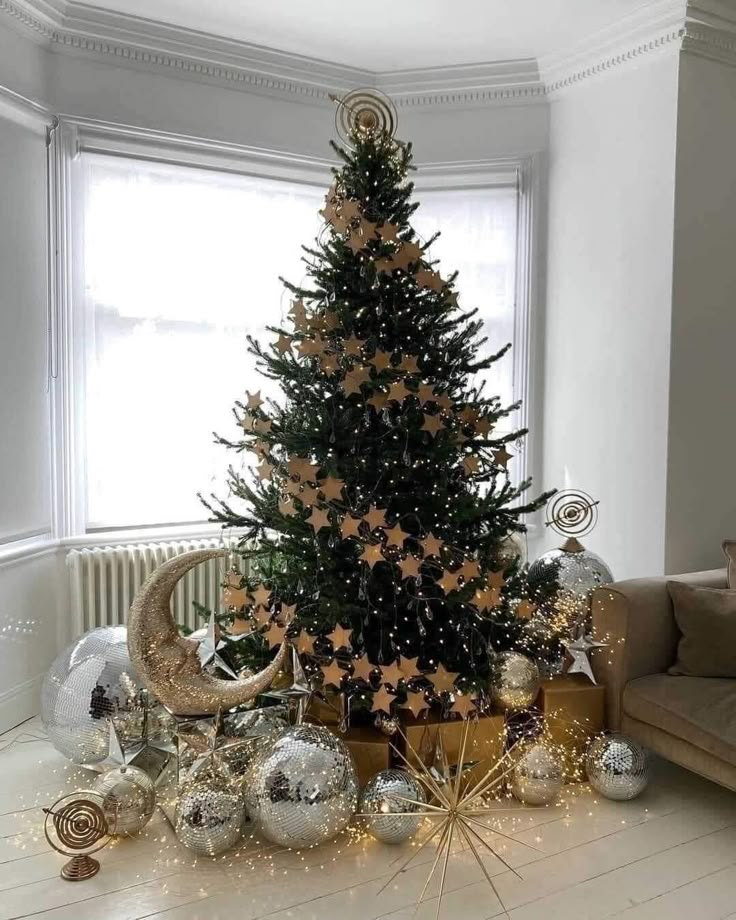
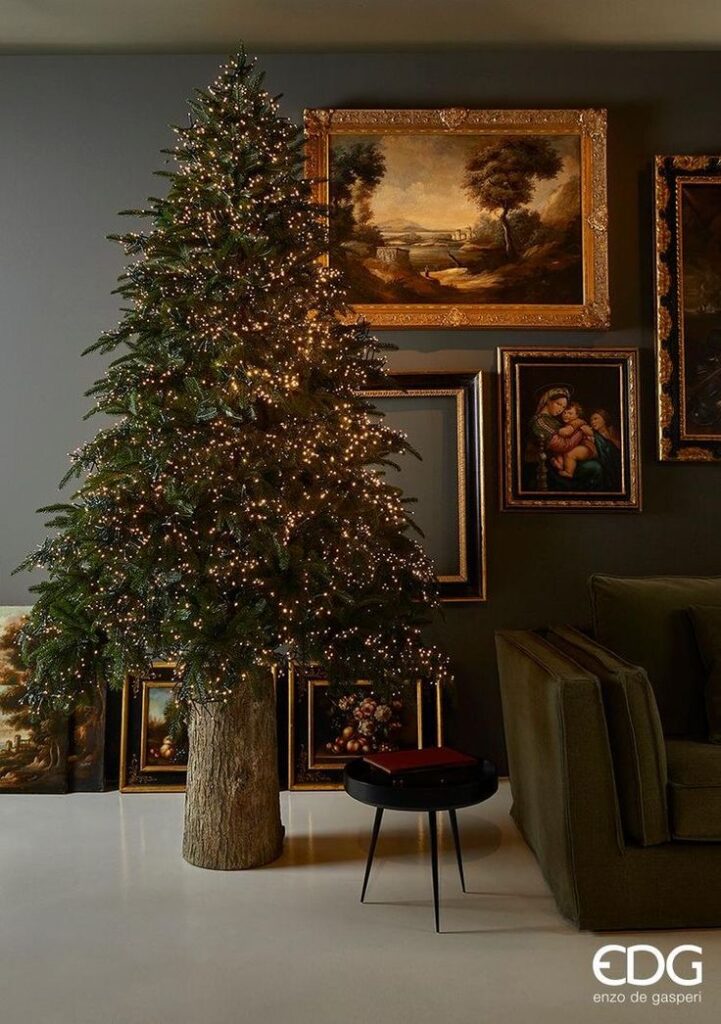
The size of the Christmas tree should match the room’s height and width. A tall ceiling can handle a tree over 7 feet, but shorter ceilings need smaller trees, usually between 4 and 6 feet.
The tree’s shape matters for decoration and fit. Some are narrow and tall, like the pencil pine, which works well in small spaces. Others, like the Fraser fir, have a classic full shape and spread wide.
Measure the available space before buying to avoid overcrowding. A tree that is too big can block doors or furniture. Also, consider the base’s width for stability.
Sourcing and Sustainability
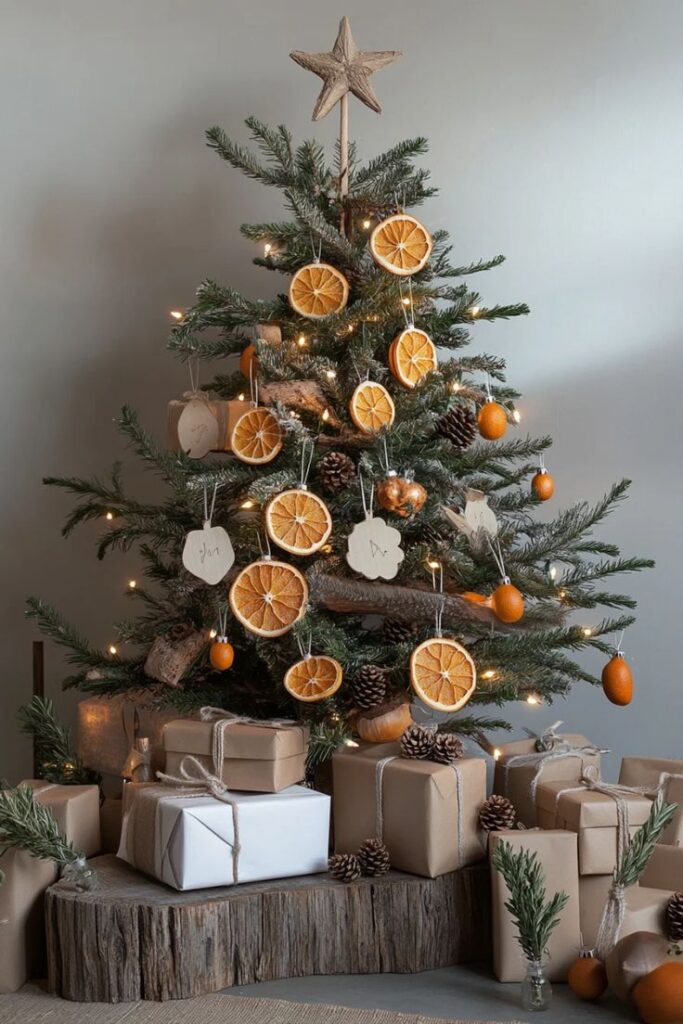

Many Christmas trees come from local farms or large tree plantations. Buying local often means fresher trees and supports nearby growers.
Sustainable options include trees grown with care to reduce environmental impact. Some farms replant after harvest, use less water, and avoid chemicals.
Alternatives like potted trees can be reused and planted after the holiday season. Look for labels such as Certified Sustainable to ensure the tree meets environmental standards.
Allergen Information

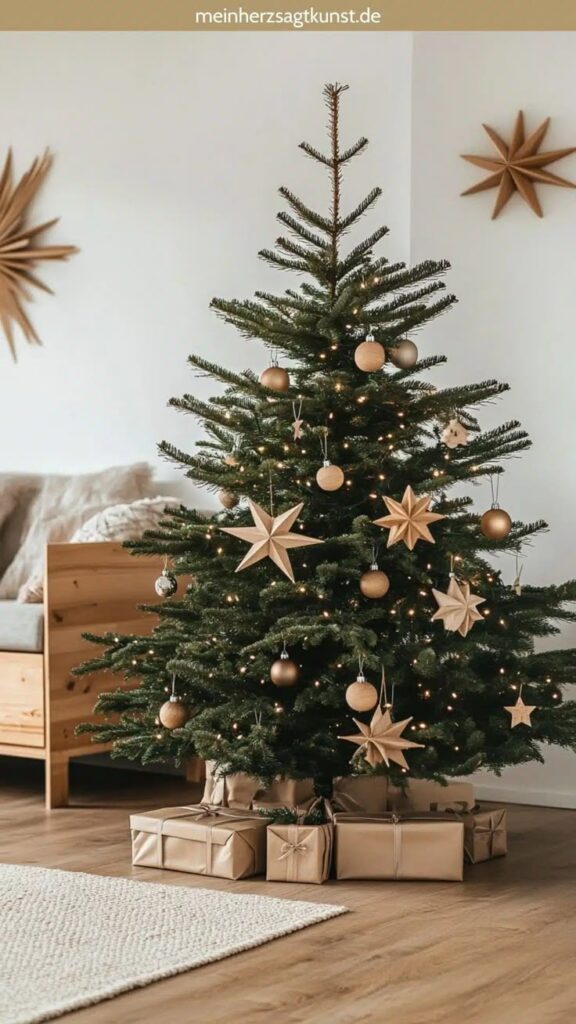
Christmas trees can trigger allergies due to mold spores or sap. Some tree types produce more pollen or sticky sap, which irritate the skin or nose.
People with allergies should avoid fir or spruce varieties known for stronger scents and higher pollen. Pine trees may be better because they tend to cause fewer reactions.
Washing the tree before bringing it inside helps reduce allergens. Vacuuming and keeping pets off the tree also lowers allergy risk.
Setting Up and Caring for a Christmas Tree
Choosing the right spot for a tree, keeping it well-watered, and following safety rules helps the tree stay fresh and prevents accidents. Proper care starts during setup and continues through the holiday season.
Installation Tips

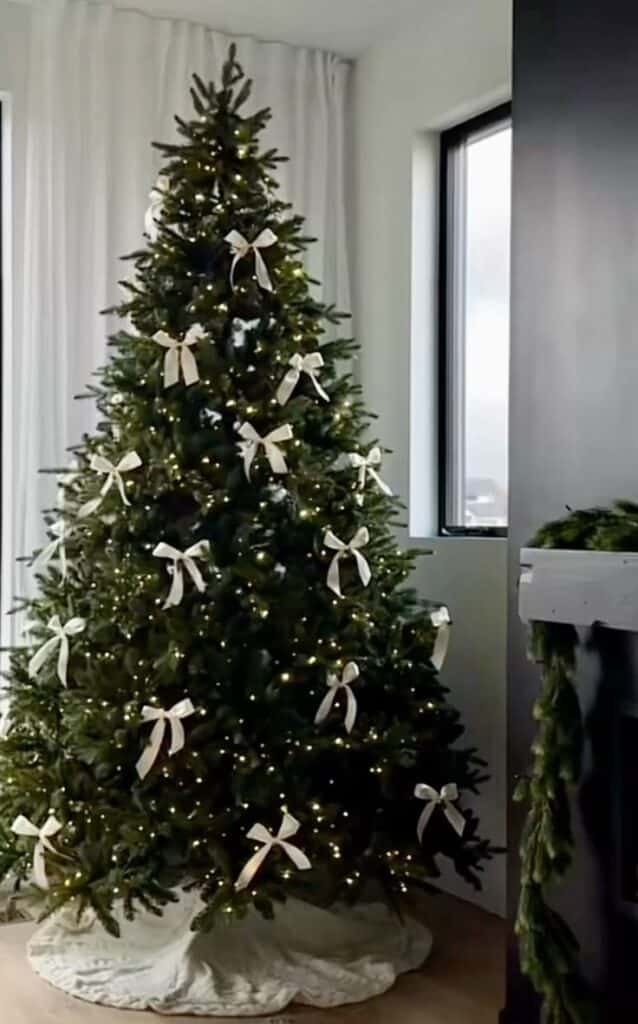
The tree should be placed away from heat sources like heaters, fireplaces, or direct sunlight. This helps avoid drying out the needles too fast.
Use a sturdy stand that fits the tree’s size. Measure the trunk diameter to pick the correct stand.
Cut about 1 inch off the tree trunk before putting it in the stand. This allows the tree to absorb water better.
Make sure the tree is stable and upright. Adjust the stand screws evenly to prevent leaning. Check the tree daily for any wobbling or dryness.
Watering and Maintenance
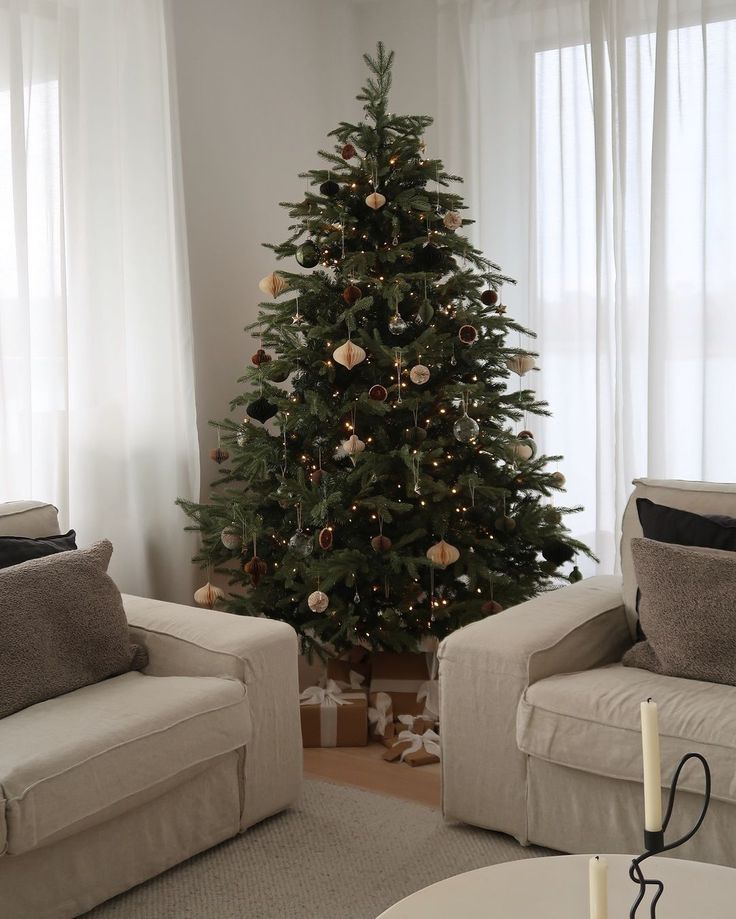

Water the tree daily with fresh, cool water. The stand should hold enough water to cover the trunk base by at least 1-2 inches.
Never let the water level drop below the trunk base. Without water, the tree will dry quickly and drop needles.
Remove any fallen needles or debris from the stand to avoid mold or bacteria growth.
Keep the room cool if possible. Cooler temperatures slow down needle loss and keep the tree fresh longer.
Safety Guidelines
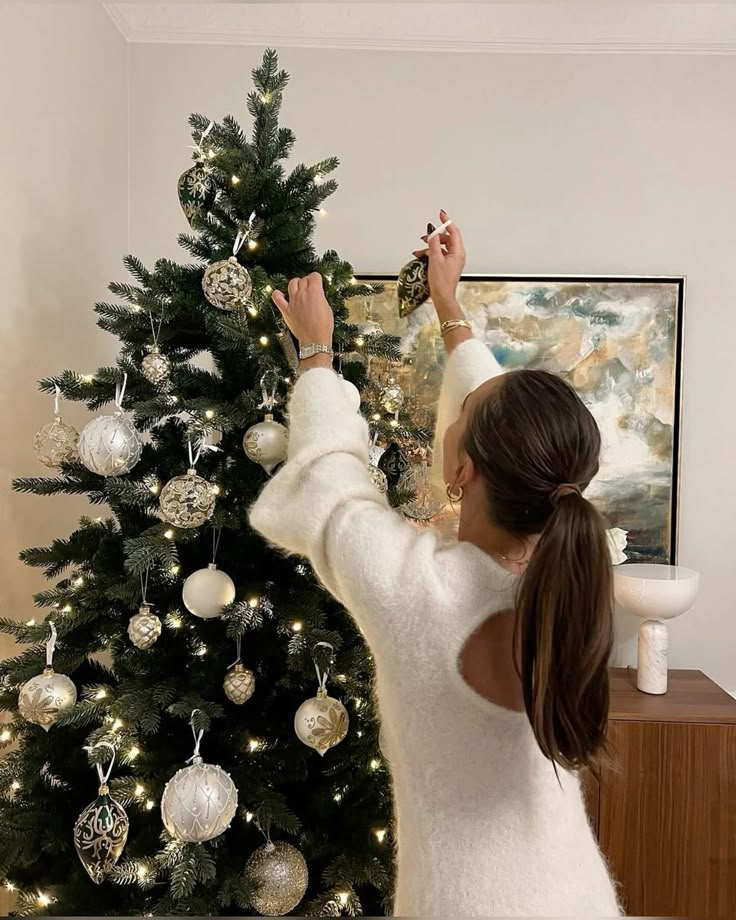

Use lights labeled for indoor use and check for damaged wires before hanging them on the tree.
Turn off all lights before leaving the house or going to sleep.
Avoid placing sharp or heavy ornaments where they might fall and cause injury.
Keep the tree stand and area around it clear of clutter to reduce fire risk.
Do not use candles near the tree. Real flames can cause fires quickly.
Christmas Tree Disposal and Recycling
Proper disposal of a Christmas tree can help reduce waste and support environmental health. Options include using local services, turning trees into useful materials, or finding new ways to reuse them.
Curbside Pickup and Drop-off
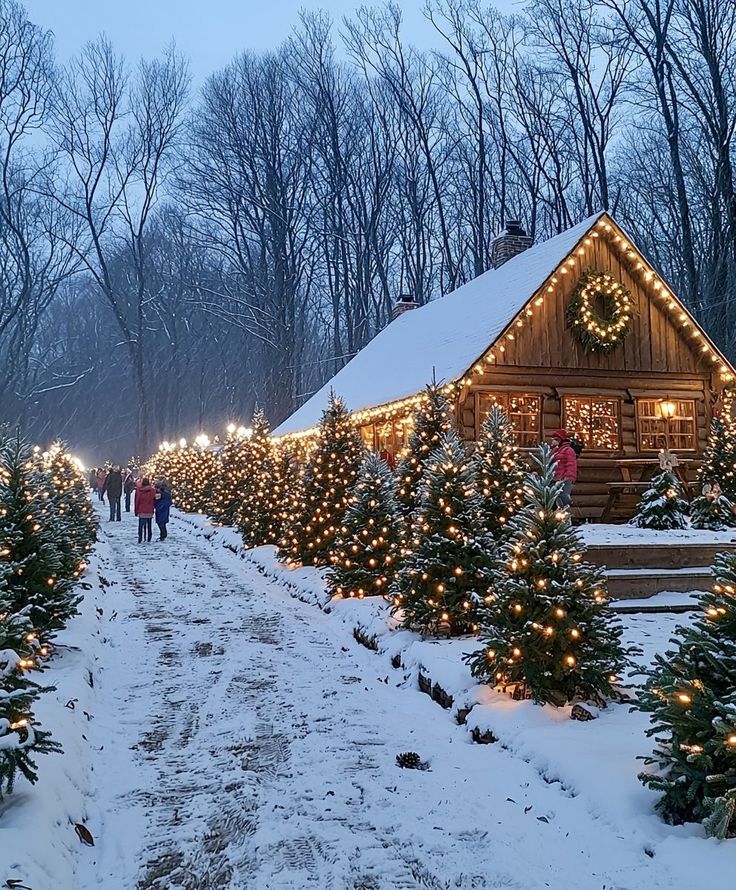

Many cities offer curbside pickup for Christmas trees after the holidays. Residents usually need to remove all decorations, lights, and stands before placing the tree at the curb. Pickup times vary by location, so checking the local schedule is important.
Some areas also provide special drop-off sites where people can bring their trees for recycling. These sites often operate only for a limited time after Christmas. Trees collected this way may be chipped into wood mulch or compost material.
Composting and Mulching Options

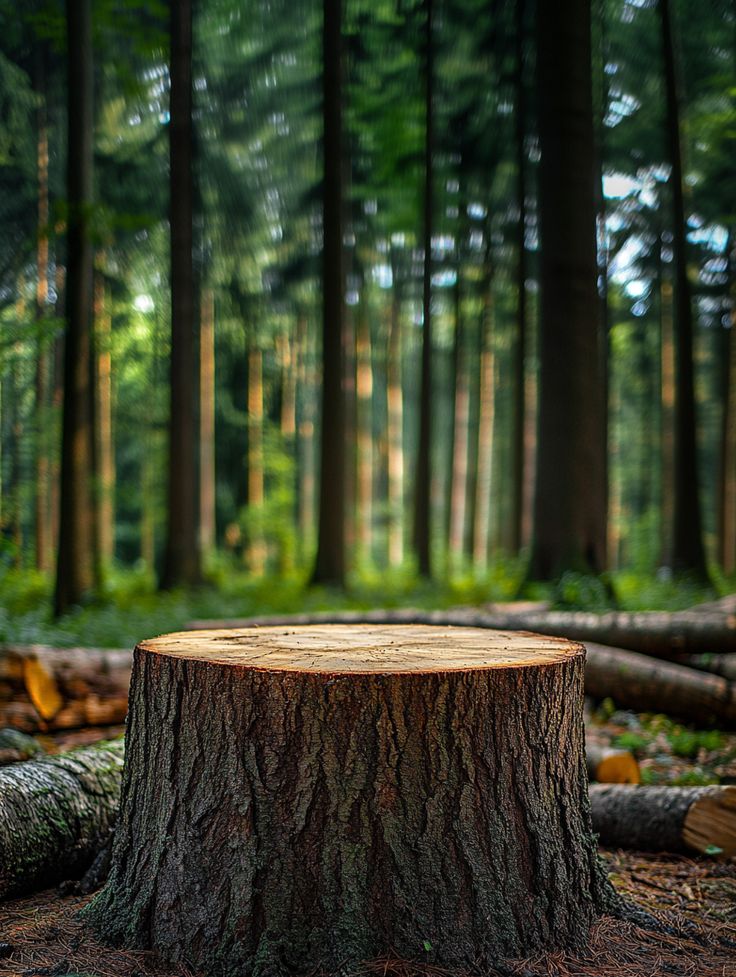
Christmas trees can break down naturally when composted. Large branches and needles add carbon to compost piles, balancing the nitrogen from food waste. Whole trees often need to be cut down before composting because they take longer to decompose.
Mulching is another common use. The trees are chipped into small pieces that can be spread in gardens or parks. Mulch helps retain soil moisture, reduce weeds, and improve soil quality. Many communities create free mulch from collected trees during the recycling program.
Reusing and Repurposing
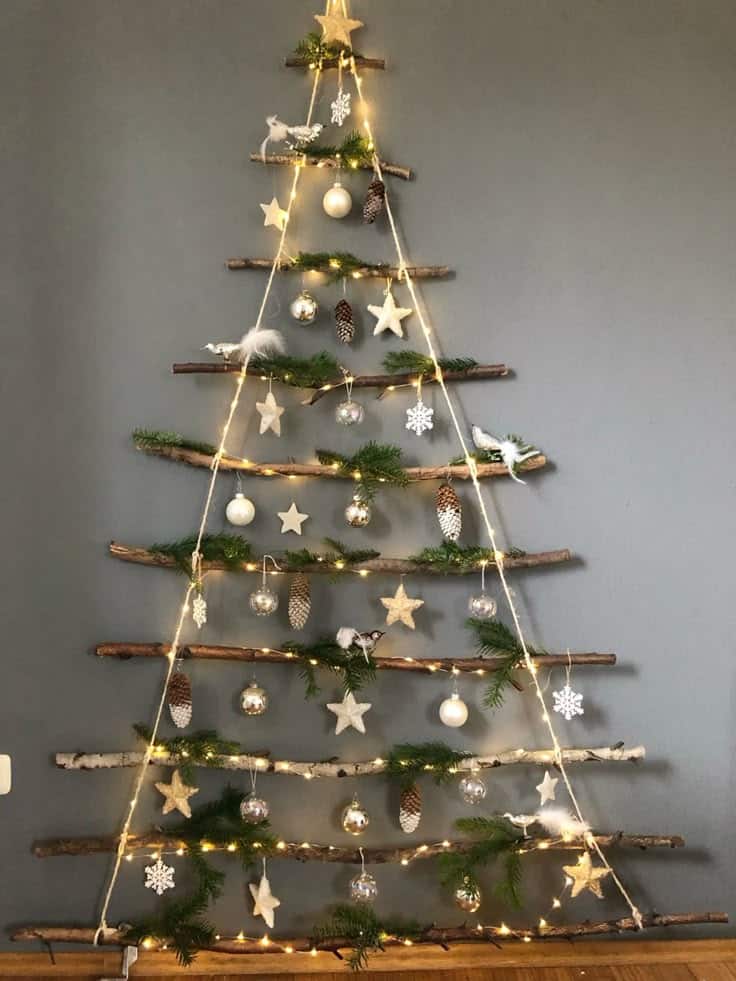

Trees can be reused in creative ways. Some people cut branches to use as natural holiday décor or firewood. Wood from trunks is sometimes crafted into furniture or small projects.
In some regions, old trees are placed near waterways to create fish habitats. The branches provide shelter and food for aquatic life. Others use parts of trees for erosion control on slopes and riverbanks.
Global Christmas Tree Customs and Trends
Christmas tree customs vary widely around the world. Some traditions focus on specific decorations or tree types. Others emphasize unique ways of celebrating. These differences show how culture shapes holiday practices.
European Christmas Tree Practices
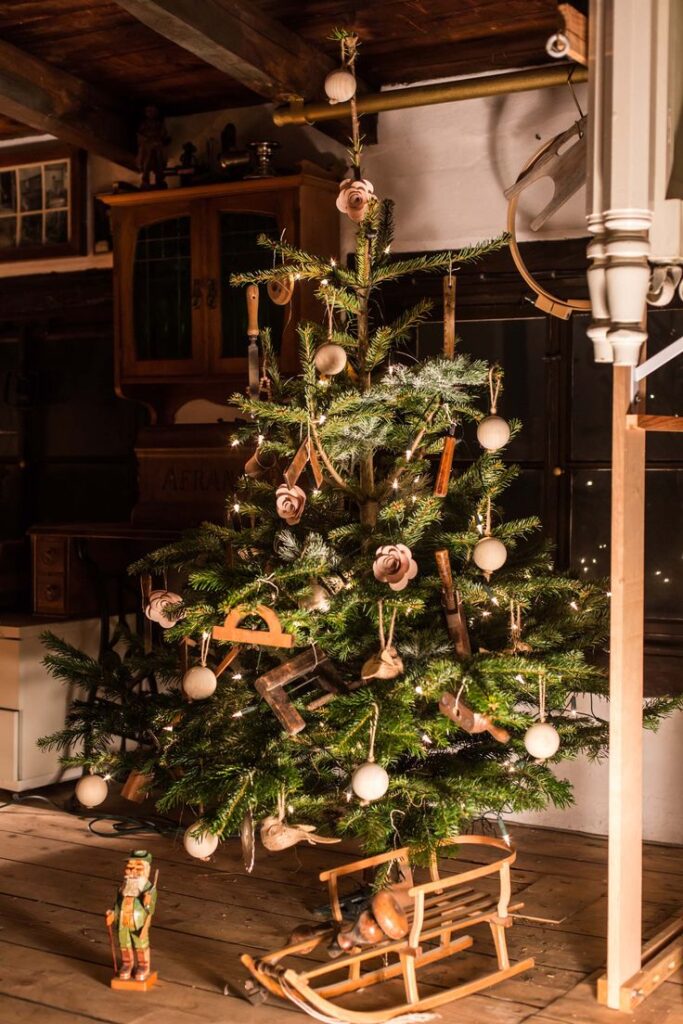

In Europe, the Christmas tree often has deep roots in local history. Germany is especially known for starting the modern Christmas tree tradition. Many German trees feature natural decorations like nuts, fruits, and candles.
In Nordic countries, evergreen trees are common too. People often use simple decorations such as straw ornaments and stars.
In the UK, Christmas trees are usually put up in early December. They may be decorated with lights, tinsel, and baubles. Many homes include a tree topper shaped like an angel or star.
North American Traditions

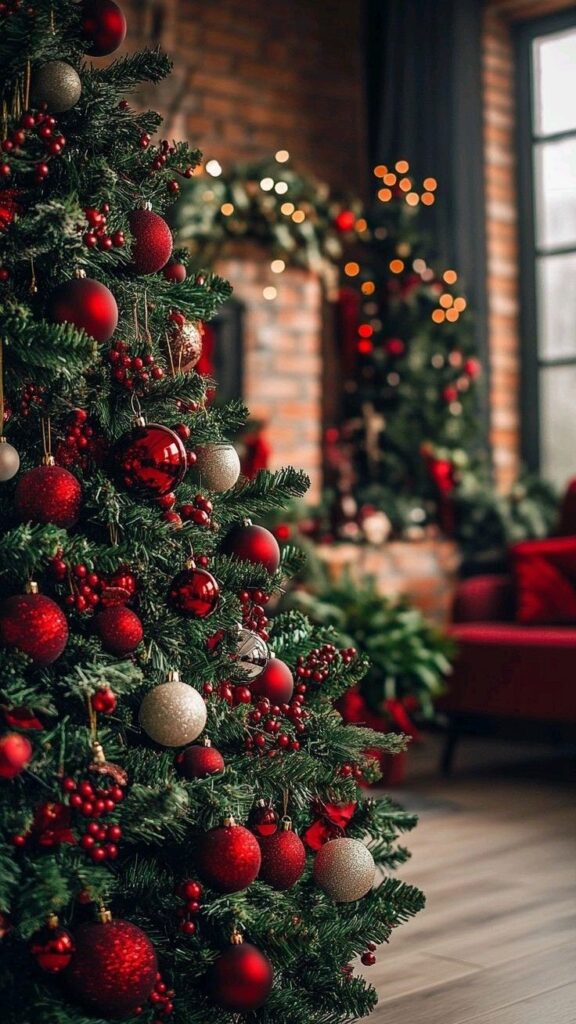
In North America, the Christmas tree is a central part of holiday decoration. Most families use either real or artificial fir or pine trees. Trees are commonly decorated with electric lights, colorful ornaments, and garlands.
In the US, the National Christmas Tree lighting ceremony in Washington D.C. is a popular annual event. Many homes also display stockings and tree skirts to add to the festive look.
Canada shares many of these traditions but often includes unique items like maple leaf ornaments. Both countries enjoy decorating trees as a family activity.
Emerging Global Trends
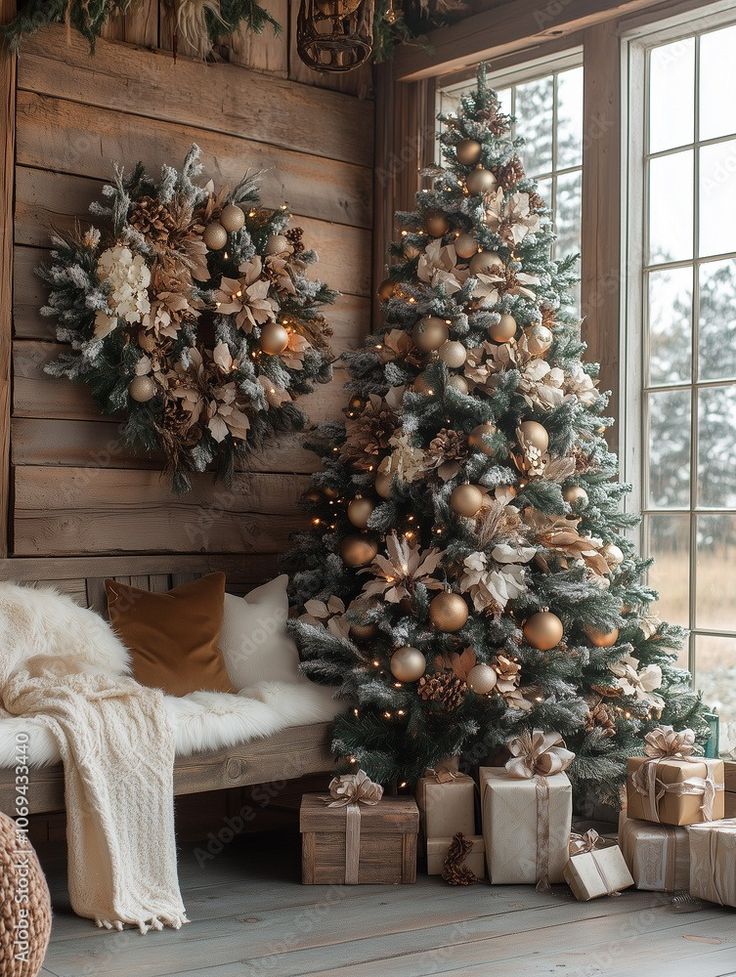
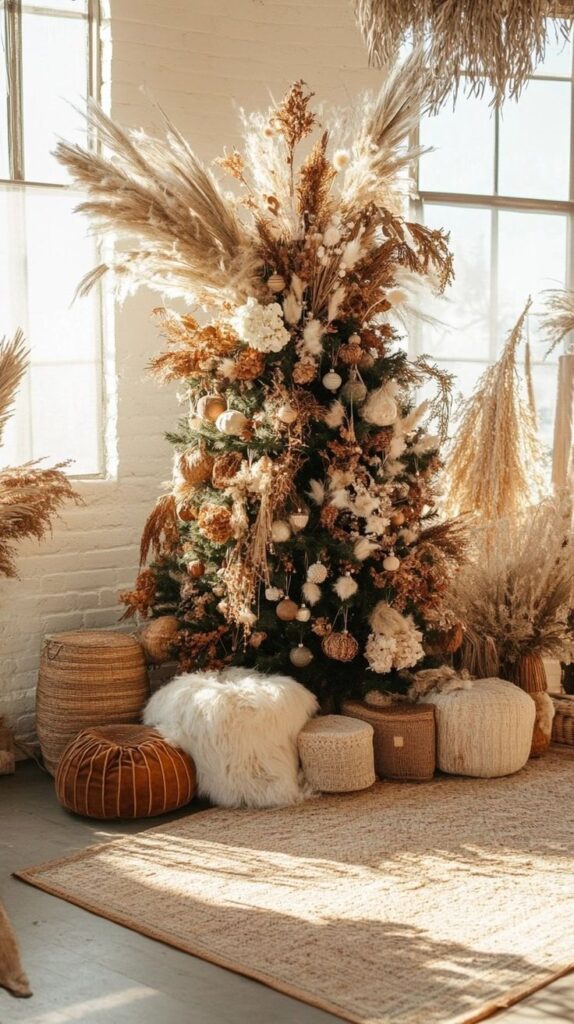
More countries outside Europe and North America are adopting Christmas tree traditions. In Japan, Christmas trees are mostly artificial and decorated with bright lights and cute ornaments.
Eco-friendly trees and decorations are growing in popularity worldwide. Some use living potted trees that can be replanted after the holidays.
Digital and LED decorations are becoming common too. These allow for more creative designs and save electricity.
Many cultures mix traditional local decorations with modern tree styles, creating new blended customs.
Fun Facts About Christmas Trees
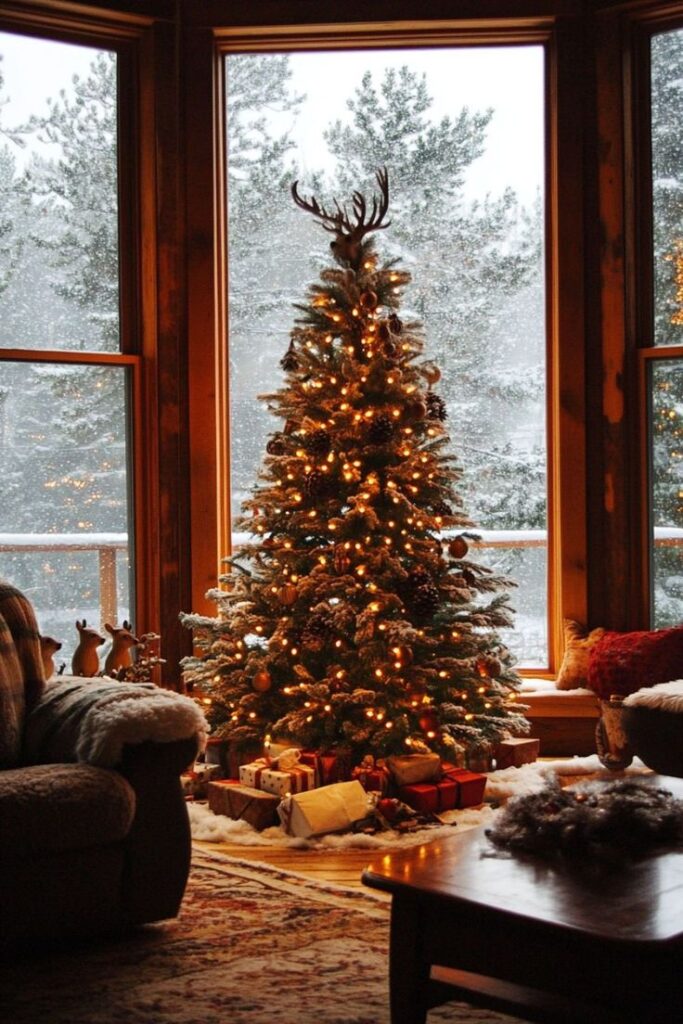

Christmas trees are usually evergreen trees. Pine, fir, and spruce are the most common types. These trees keep their green color all year.
The tradition of putting up Christmas trees started in Germany in the 16th century. People decorated trees with candles, fruits, and nuts.
Artificial Christmas trees were first made in the 19th century. They were made from materials like feathers and wire. Today, many are made from plastic.
Every year, about 25 to 30 million real Christmas trees are sold in the United States. Farmers grow trees specifically for this purpose.
Here are some fun facts in a table:
| Fact | Detail |
|---|---|
| Tallest Christmas tree | Over 67 meters tall |
| Average tree height for homes | 1.8 to 2.4 meters |
| Most popular tree type in the US | Fraser fir |
| Origins of lights on trees | Started in the early 1900s |
Christmas tree lights were first used to replace candles. This made decorating safer and easier.
Some people recycle their Christmas trees. Many communities turn old trees into mulch for parks and gardens.
The smell of a real Christmas tree comes from natural oils. These oils help keep bugs away and give the tree its fresh scent.
- 28shares
- Facebook0
- Pinterest28
- Twitter0



